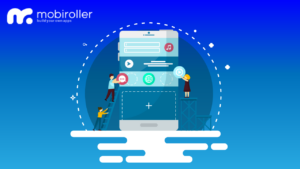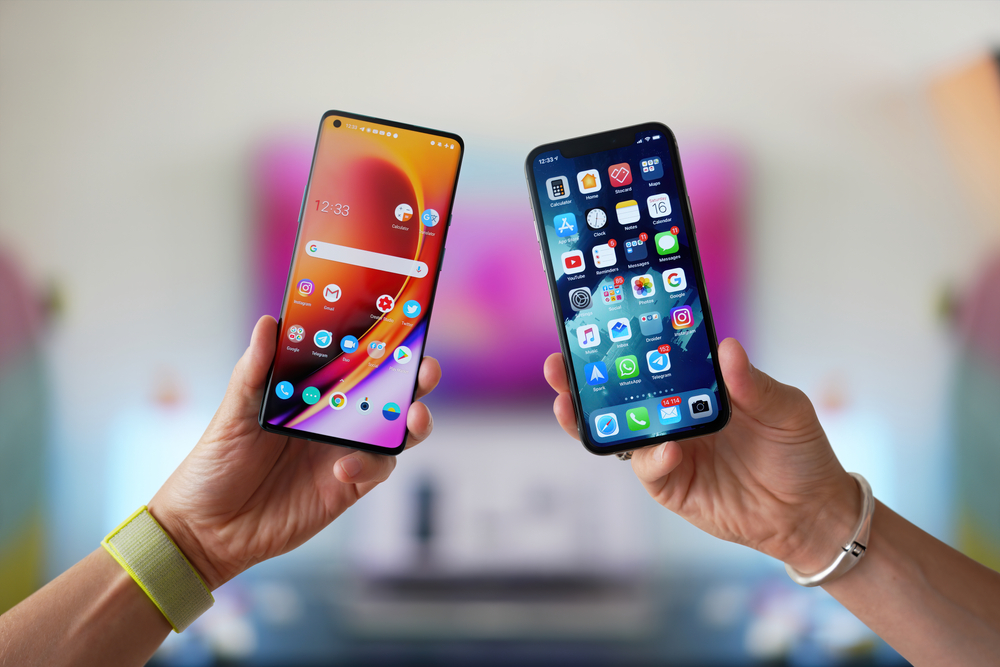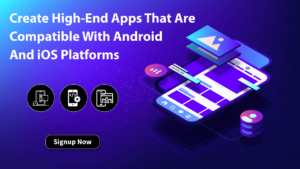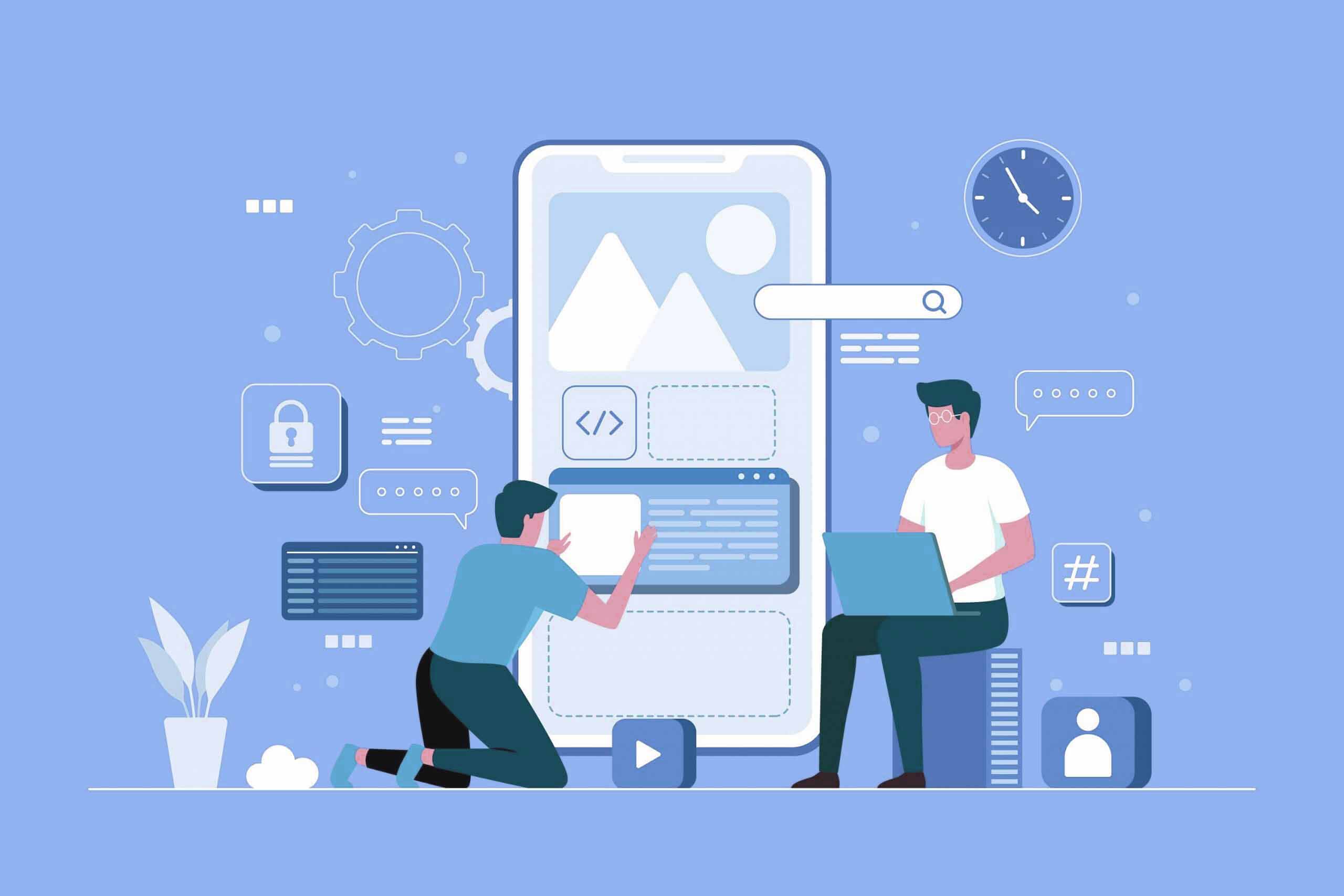With so many mobile devices out there, it can take a lot of work to keep up with their differences. Android vs iOS has been a hot debate among app developers since the smartphone’s advent. While Android boasts many app downloads, iOS offers quality over quantity. The market share of each platform is different in various countries. Android leads the way in developing nations, while iOS is the preferred choice in developed economies.
We know that Apple makes iPhones and Google makes android phones, but what do those terms mean in mobile development? Are there differences in coding languages? How do app developers decide which platform to use?
Let’s Explore The Answers To These Questions.
What is iOS Mobile App Development?
iOS mobile app development is creating native applications for the iPhone and iPad. iOS developers use Objective-C, Swift, and the Cocoa Touch frameworks to build robust and user-friendly apps. The App Store is the leading distribution platform for iOS apps, and developers must adhere to specific guidelines to have their apps approved for sale.

The iOS platform is known for its user-friendly interface and robust security features. As a result, iOS apps are highly sought after by businesses and individuals alike. While many developers create apps for iOS and Android platforms, some specialize in developing for just one of these ecosystems. There has been a growing trend toward using Storyboards and Interface Builders to create iOS user interfaces in recent years. This allows for a more visual approach to app development, which can be quicker and easier to use than traditional coding methods.
What is Android App Development?
Android app development is the process by which new applications are created for devices running the Android operating system. Android apps can be written using Kotlin, Java, and C++ languages. The Android Software Development Kit (SDK) provides the tools and APIs necessary to begin developing new apps. All Android apps must undergo a rigorous approval process to be published on the Google Play store. Once an app is approved, it can be downloaded and installed by anyone with an Android device.

The popularity of Android devices makes them an attractive target for app developers. The large install base means a potential market for almost any type of app imaginable. In addition, Android devices are available in a wide range of price points, making them accessible to a broader range of users. As a result, Android app development can be a profitable endeavour for those with the skills and creativity necessary to create successful apps.
Some Key Differences Between iOS and Android Development:
Let’s have a look at some of the key differences between iOS and Android development:
1. Objective C vs Java:
Objective C vs Java has long been a critical difference between iOS and Android development.
Objective C is a general-purpose, object-oriented programming language that adds Smalltalk-style messaging to the C programming language. It was the primary language used by Apple for the OS X and iOS operating systems and their respective application programming interfaces (APIs). However, in 2014, Apple announced they would move to a new programming language called Swift. Swift is a compiled programming language designed to be easy to read and write. It is compatible with both Objective C code and Cocoa Touch frameworks. As a result, many developers have started to use Swift for developing iOS applications.
On the other hand, Java is a versatile and powerful programming language that has long been popular among developers. Android applications are typically written in Java, and the Android SDK provides tools and libraries that allow developers to create high-quality applications. Although Swift is becoming more popular among iOS developers, Java remains the dominant language for developing Android applications.
2. Open Source Vs Closed Source:
One key difference between iOS and Android development is open source vs closed-source software. Open-source software is publicly available and can be modified by anyone, while closed-source software is only accessible to the company or individual who created it. This distinction can have a significant impact on the way apps are developed. For example, iOS developers generally work within the constraints of Apple’s closed ecosystem, making it difficult to create innovative apps.
In contrast, Android developers can take advantage of the vast array of open-source tools and libraries, resulting in a more open and flexible development process. However, this flexibility comes at a cost, as Android developers must be careful to avoid potential security risks associated with using open-source software. Overall, whether to use open-source or closed-source software is a critical factor in developing iOS and Android apps.
3. App Store Model:
The app store model is a key difference between iOS and Android development. While both platforms have app stores, the Android store is open to any developer who wishes to create an app. The iOS store, on the other hand, is only available to developers who Apple has approved. This difference has several implications for developers:
- The Android market is much more fragmented than the iOS market. This can make it difficult for developers to reach a wide audience.
- It means that Android developers have less control over the distribution of their apps.
- iOS developers can generate more revenue from their apps.
Because of these factors, the app store model is a key difference between iOS and Android development.
4. Fragmentation vs stability:
There are a few key ways in which iOS and Android development differ, but one of the most important is in terms of fragmentation vs stability.
Because Android is an open-source platform, a wide variety of devices use it. This can make developing challenging, as each device may have different specs and features. While Android development is quite open and fragmenting, with many other devices and operating systems in use, iOS development is much more stable. This leads to a few benefits for iOS developers.
- First, it is easier to develop a more consistent platform. This makes testing and debugging apps simpler and ensures that apps will work well on many devices.
- Second, because fewer versions of iOS are in use, it is easier to reach a larger audience with your app. Users are also more likely to have the same version of iOS, which further simplifies development.
- Finally, stability can lead to greater security, as it is easier to identify and fix vulnerabilities when fewer operating system variants are in use.
These factors make iOS development a more appealing option for many developers.
5. SDKs:
One key difference between iOS and Android development is the use of SDKs. While all Android developers must use the Android SDK, iOS developers can choose between the Objective-C SDK and the Swift SDK. This can be a significant advantage for iOS developers, allowing them to select the language that best suits their needs. In addition, using SDKs can help improve productivity by providing a consistent development environment. For example, the Android SDK includes several libraries that can be used to develop complex applications.
By contrast, the Swift SDK is designed to be more lightweight and easy to use. As a result, iOS developers can often get up and running with new projects more quickly than their Android counterparts. In conclusion, using SDKs is one of the key differences between iOS and Android development. While it can have some advantages for iOS developers, it is essential to remember that each platform has unique capabilities and limitations. As a result, any decision about which platform to develop should be made on a case-by-case basis.
6. Development Environment:
The development environment is one of the significant differences between iOS and Android development. For developing iOS apps, developers need to use Xcode, an Integrated Development Environment (IDE) provided by Apple. On the other hand, Android app development can be done using Android Studio or Eclipse, which are also IDEs. However, the development environment for iOS differs from that of Android because Xcode is only available for macOS. In contrast, Android Studio and Eclipse are available for Windows as well. This means that developers who want to develop for iOS will need a Mac, which can be a limiting factor. Nevertheless, Xcode and Android Studio are powerful IDEs that provide many features and tools to help developers create high-quality apps.

Another difference between the two development environments is that Xcode is explicitly designed for developing iOS apps. In contrast, Android Studio is designed to create Android apps and other applications. This means that Xcode has several features and tools specifically tailored for building iOS apps, such as support for Swift, the programming language used for developing iOS apps. In contrast, Android Studio has a more general-purpose focus and has fewer features and tools specifically for developing Android apps. Nevertheless, both IDEs can support all stages of the app development process, from design and coding to testing and deployment.
It should be noted that there are also some open-source alternatives to Xcode and Android Studio, such as Visual Studio Code and Atom, which can be used for developing iOS and Android apps, respectively. However, these IDEs are less feature-rich than Xcode and Android Studio and might only be suitable for some developers. In conclusion, the development environment is one of the significant differences between iOS and Android app development. Developers who want to develop for iOS will need to use Xcode, which is only available on macOS. In contrast, those who wish to build for Android can use Android Studio or Eclipse, which are available on Windows.
7. Navigation Patterns:
iOS and Android have distinct differences when it comes to navigation patterns. On iOS, the focus is on simplicity and efficiency, while Android emphasizes giving users more control. This can be seen in the design of the home screen. On iOS, there is a single home screen with a dock at the bottom that contains the most frequently used apps. In contrast, Android devices have an app drawer that contains all installed apps, giving users more choices in how they organize their home screen. The app drawer can be accessed by tapping an icon or swiping up from the bottom of the screen.
Another difference is in how navigation is handled within apps. On iOS, a bottom tab bar is typically used to switch between different sections of an app. In contrast, Android uses a navigation drawer, accessed by tapping on an icon or swiping from the left edge of the screen. The navigation drawer provides users quick access to different app sections and can be customized to contain frequently used items for easy access. These are some significant differences between iOS and Android development regarding navigation patterns.
8. Cost:
One of the most important distinctions is cost. Android devices are typically much cheaper than their iOS counterparts, making them more accessible to a broader range of consumers. This difference is mainly because Android is an open-source platform, while iOS is closed and proprietary. As a result, various companies can manufacture Android devices, each with its own pricing strategy.
In contrast, all iOS devices are produced by Apple, which allows the company to maintain tight control over pricing. For developers, this difference can have a significant impact on costs. Creating an app for Android is generally much cheaper than developing one for iOS since there is no need to purchase expensive developer tools or licenses. As a result, many small businesses and individual developers focus on Android, even though the platform has a smaller overall market share.
Thus, we can see several key differences between Android and iOS development from both a technical and business perspective. As a developer, it is essential to carefully assess these factors before deciding which platform to develop for.
Are There Other Differences Between Developing For iOS and Android?
Yes, there are many other differences between developing for iOS and Android. For example, in terms of app monetization options, Apple offers in-app purchases, while Google provides in-app advertising. Additionally, when distributing apps, Apple requires developers to go through an approval process before their app can be listed in the App Store. At the same time, Google has a different approach.
What Are Some Of The Benefits Of Developing iOS?
Some benefits of developing for iOS include its large user base, strong developer community, and wide range of supported devices.
Conclusion:
The difference between iOS and Android development is that with Android, you have to be careful about what you use because of all the different versions of the OS. With iOS, there are only a few devices it’s been developed for, so you have fewer compatibility issues. Both development processes can be long and tedious, but the result is worth it. Ultimately, your choice depends on your goals, resources, and preferences, as both platforms have unique advantages and disadvantages. With the right combination of skill, patience, and creativity – any developer can create amazing mobile applications regardless of their platform.
In conclusion, while several differences between Android and iOS app development should be considered before diving in, both platforms offer developers plenty of opportunities!
However, if you want to take things a little step further, then Mobiroller is the best platform for developing mobile apps. With its easy-to-use interface, you can create an app for either iOS or Android in no time.
Mobiroller offers a wide range of features and tools that make app development quick and easy. So if you’re looking for an affordable, user-friendly platform that supports iOS and Android development, then Mobiroller is the right choice!







